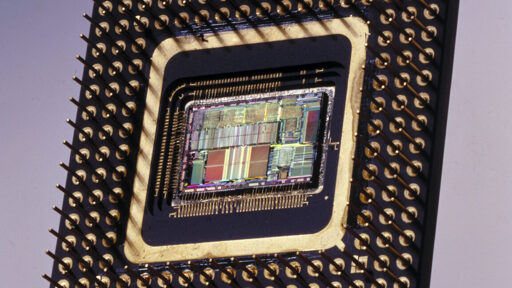- cross-posted to:
- linux@programming.dev
- cross-posted to:
- linux@programming.dev
I didn’t know whether to mark this NSFW or not but it’s time to buy a new computer if you haven’t upgraded in multiple decades.
I’m kind of shocked that it’s only been 18 years since the last 486 chip was made. It was launched in 1989 and discontinued in 2008, while the original Pentium was launched in 1993 and discontinued in 1999. Hell, the Pentium 4 was discontinued in 2007.
It’s quite incredible, and very interesting. I wonder why they continued to produce these CPUs.
Probably for industrial machines.
Yup. Airplanes, for example, take a lot of validation. It’s extremely expensive to retest a new configuration, so they make one computer, get it validated, and use it unmodified for the next thirty years.
This is why the Boeing Max 8 thing was a big deal. They made approved modifications, but found in rare conditions it could cause unexpected and dangerous flight conditions. But, a times b times c was estimated to be less than the cost of doing it properly, so they didn’t.
deleted by creator
Isn’t that the employee who was found dead like a week later? You know, the one Boeing killed?
Yeah, the amount of industrial machinery being controlled by ancient hardware would baffle a lot of people.
For a comparison people might relate to: There are ATMs running twenty year old versions of Windows XP.
There are still ATMs running OS/2 and probably lots of POS systems running DOS.
I think you can still buy new 486 compatible chips today.
That’s a real showcase of how linux actually cares about its users over other companies. It’s great to see that hardware I buy now will be supported on linux for a long long time into the future.
Whew. My 586 is safe.
I remember when Mandrake was a young distro – a redhat derivative – and they (gasp) chose to compile for i586 instead of i386. People were like VROooooOM! And a bunch of other people were like: why would you target CPU instructions that not everyone has?!
I switched to Mandrake for that (back in the day).
For now
The Linux kernel still supports Pentium but most Linux distros do not. The only two I can think of are Adelie and Gentoo. Nothing based on Debian does (Pentium Pro minimum).
Nooooooooo my…wait I’ve never actually owned a 486. Carry On.
Boo.
Me neither but I did own an 6502 based compy.
My first PC was a Pentium 2 though.
First they came for 486, and I did not speak out - because I’ve never actually owned a 486…
I never owned a 486 either. My first upgrade after the 286 was a Pentium.
I think it should be possible to still run Linux on almost every 25 years old computer.
If the computer is older than this, it really becomes a piece of history and I can accept that it’d take efforts from the user to keep it in use, just like a collection car.
I only hope no bricking update is gonna be proposed to the people running such old hardware. The distribution should check if the hardware is compatible with a newer kernel before updating.
Still I think it’s important that Linux remains the OS of choice for old hardware and that the some distros remain deficated to these museum pieces.
Linux newb here. So I’m assuming this would make the kernel smaller, and take up less space. Would it be significant?
It’s probably less about making the kernel smaller and more about security and reviewing code. The less code you have to maintain, the fewer vulnerabilities even if it’s old code.
I would doubt almost 20 year-old code is taking up a lot of space or presenting new vulnerabilities. And it’s obviously open source so if anyone needs it, they can always use an older kernel or maintain it. Sometimes, your oldest code is insane. I wish there was a budget for every company and government to pay retirees part time to go back over their oldest code that’s still in use. A lot of retired programmers would do it for fun and nostalgia. And to be horrified something they wrote 20 years ago hasn’t been updated or replaced.
I wish there was a budget for every company and government to pay retirees part time to go back over their oldest code that’s still in use. A lot of retired programmers would do it for fun and nostalgia.
There is no budget for it AFAICT but there is https://github.com/abandonware and others trying to help on that path.
The Linux kernel is well over 30 million lines of code (lots of that is drivers).
This change shrinks the kernel by about 15,000 lines. That is not nothing, but it hardly moves the needle.
It is just one less thing to have to worry about and one less constraint to limit flexibility in the future.
Probably not a lot of space savings, but certainly a reduction in complexity, which helps programmers keep everything together and frees their time to work on the newer stuff
If anyone is actually using a 486 still, you can try using the kernels that the CIP maintains https://git.kernel.org/pub/scm/linux/kernel/git/cip/linux-cip.git They actually still support kernel 4.4
The latest kernels still work on 486 - kernel 6.14 currently.
I just meant after support is dropped. The CIP I think supports each of its kernels for 10 years? So whatever the last kernel is before they officially drop support will still be maintained by them for a long time. :)
Got it. I was not familiar with this Linux Foundation initiative. Very cool.
It looks like they support the LTS kernels as an extension of Debian. So, kernel 6.12 will get 10 years of support after Debian Trixie launches with it this summer.
That means 486 will be fully supported until at least mid 2035. Amazing.
That’s what I’m saying! It’s kinda awesome how long things get supported in linux land!
but what abt my 386SX tho
i like this. hardware should be the least disposable as possible, as long as there is manpower to maintain it. as long as theres people still using it fruitfully, its not trash.
“My baby, you have blossomed into a wonderful adult. It’s time to stop relying on us now, though. Go on and do big things, or something…”
Is the coming of age ceremony when he loads Doom?
Following the links in the article, someone got windows xp to load on a 486…
deleted by creator
Old kernels still run on it, it just won’t get new versions.
The reason Linux (and BSD) is perfect for old machines is that the source code is available, so anyone can maintain it if they want to. It doesn’t mean the core Linux team has to maintain it for them though.
Yeah, you’re right.
You really got dogpiled hard there, as if being corrected half a dozen times wasn’t enough, they had to downvote you to oblivion as well :(
I don’t mind that people write that old hardware can still be used, because they are correct, but the number of downvotes breaks my heart.
As somebody that offered a “correction”, I can assure you that I did not downvote.
deleted by creator
Over 30 years of support :)
deleted by creator
It’s about 15 years ago I used a 486 based embedded board with ethernet, can’t remember the name of it.
Latest 486 “distro” released 3 months ago:
https://github.com/marmolak/gray486linux
Same userland as Alpine Linux. Newer version of MUSL than current Void Linux ships with. Up to the minute kernel.
The oldest kernel version still getting updates at kernel.org is from 6 years ago. So, we may still have active 486 support in official kernels for years yet.
Even after that, the kernel will stay available. You can always backport any important security fixes yourself.
And this is just the kernel. A 486 will run current c libraries for decades most likely.
You can still use Linux on 386 and Git commits as recent as a year ago say things like “adding support for new hardware”.
https://github.com/marmolak/gray386linux
Again, even on a 386 you have the same C library and userland as found in current Alpine Linux.
Good
Its like… Bro… Its a 486 CPU
You can still run perfectly good software on it. You’ll just be limited by the resources, so you’re not playing Crysis by any means.
Just a few years ago I got a 286 up and running with Minix. It was neat, but I didn’t get as far as compiling the Ethernet driver, so I didn’t really do much with it and it eventually finished its journey to recycling.
Wow, to wake up and see that a large number of people have downvoted my simple noob comment is definitely something. C’mon people, chill, I am quite new to all this stuff.
And how much have you paid for the last 18 years of support? You can continue to run Linux on old hardware, as long as you’re willing to pay for the development. 18 years is one hell of a freemium model.








